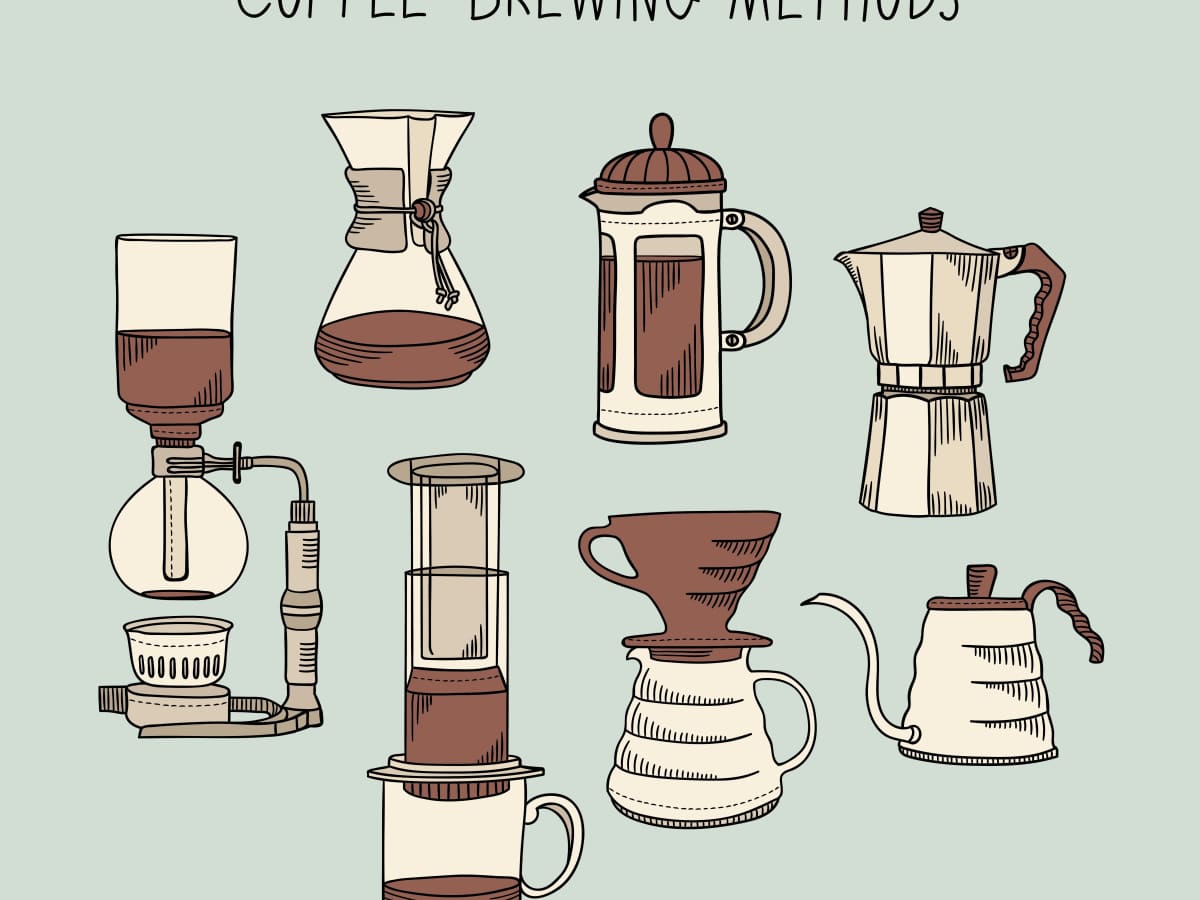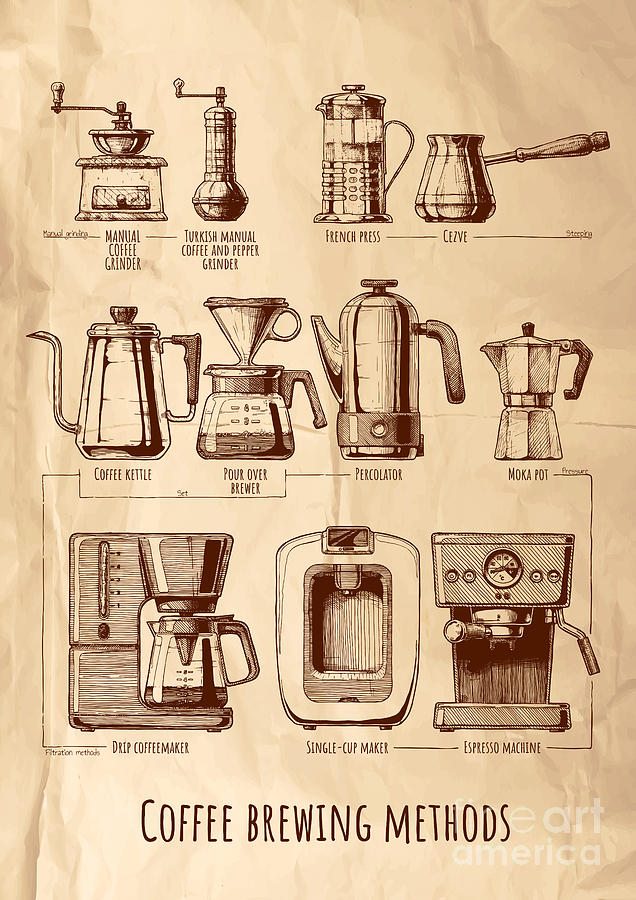Coffee Brewing Methods Debunked: From French Press to Cold Mixture
Coffee Brewing Methods Debunked: From French Press to Cold Mixture
Blog Article
Understanding Various Coffee Brewing Techniques for a Richer Flavor Experience
A detailed understanding of various coffee developing methods can profoundly impact your flavor experience, revealing the elaborate nuances of this cherished beverage. As you think about which come close to ideal matches your preference choices, the question continues to be: exactly how do these approaches affect the last cup, and which might raise your coffee experience to new elevations?
Drip Coffee Maker
While many coffee fanatics value the nuances of various developing methods, the drip coffee maker stays a staple in offices and families due to its simpleness and effectiveness. This device runs by home heating water and allowing it to flow through coffee grounds, extracting tastes and oils, which after that leak into a pitcher below.
The drip coffee maker is favored for its ability to brew several cups at the same time, making it ideal for busy early mornings or gatherings. Customers can conveniently customize the toughness of their coffee by adjusting the quantity of coffee premises used or selecting a brew strength setting found in many modern makers. Furthermore, programmable functions enable users to set a timer, guaranteeing a fresh pot of coffee prepares upon waking.
Upkeep is relatively uncomplicated, as many drip coffee machine call for periodic cleansing to remove mineral buildup. Lots of versions are likewise outfitted with attributes such as auto shut-off, which boosts safety and energy effectiveness. Ultimately, the drip coffee manufacturer provides a trustworthy and straightforward alternative for those looking for a consistent and satisfying coffee experience without the intricacies of more sophisticated brewing methods.

French Press
The French press offers an unique brewing experience that contrasts greatly with the automated process of a drip coffee machine. This manual technique permits for an intimate interaction with the coffee-making procedure, providing individuals better control over numerous parameters, such as soaking time, coffee-to-water proportion, and grind dimension.
To make coffee making use of a French press, coarsely ground coffee beans are soaked in hot water for approximately four minutes. This immersion method extracts abundant oils and tastes from the coffee, causing a robust drink that highlights the subtleties of the beans used. The steel or nylon mesh filter of the French press enables important oils to remain in the brew, adding to its robust flavor profile.
When utilizing a French press, it is necessary to focus on the developing time and water temperature level, as these aspects significantly influence the last taste. Experimentation with different coffee varieties and soaking periods can bring about a customized taste experience. Overall, the French press is a fulfilling and available approach for coffee lovers looking for to grow their appreciation for the intricacies of their preferred beverage.
Pour-Over Techniques
Pour-over strategies elevate the coffee developing experience by enabling precise control over every aspect of the process, from water temperature level to pouring method. This approach includes manually putting warm water over coffee premises in a filter, usually situated in a dripper, which enables for ideal extraction of flavors.
To start, selecting the appropriate coffee grind is critical; a medium to medium-fine grind works best to ensure proper water flow and removal (coffee brewing methods). Next, water temperature need to ideally vary between 195 ° F and 205 ° F, as this range removes the finest flavors without important link scalding the coffee
The putting technique additionally plays an essential role. A slow, round activity when saturating the grounds can help uniformly remove oils and flavors. It's commonly suggested to allow the coffee to grow for 30 secs after the preliminary pour, which lets co2 getaway and enhances taste advancement.
Espresso Equipments
For those looking for a various yet similarly gratifying developing experience, espresso machines offer an one-of-a-kind technique of coffee preparation that emphasizes stress removal. This process includes requiring warm water through finely-ground coffee at approximately 9 bars of pressure, leading to a concentrated shot of coffee that showcases rich flavors and fragrances.

The top quality of coffee is influenced by several aspects, including grind dimension, dose, water temperature level, and removal time. Achieving the excellent espresso shot calls for practice and interest to information. Furthermore, the espresso offers as a base for different coffee beverages, such as cappucinos, coffees, and Americanos, making it a flexible option for coffee lovers.

Cold Mixture Methods
Cold mixture coffee has acquired popularity for its smooth, low-acidity account and rejuvenating taste, making it an excellent choice for cozy weather condition or those sensitive to site web conventional developing techniques - coffee brewing methods. The process of chilly brewing usually involves steeping coarsely ground coffee beans in chilly or room temperature water for a prolonged duration, typically 12 to 24-hour. This technique removes flavors in a different way than warm water, leading to a rich, complicated mixture that highlights fruity and chocolatey notes
There are various cool mixture approaches readily available, consisting of immersion and drip developing. The immersion technique is the most simple; simply integrate coffee and water in a container, let it high, and after that strain the premises. Conversely, the drip method utilizes a specific coffee maker to gradually trickle water through coffee premises, permitting a much more controlled removal procedure.
Despite the approach chosen, the coffee-to-water proportion is crucial, usually suggested at 1:4 for a focused mixture that can be watered down with water or milk before offering (coffee brewing methods). Cold mixture can be offered over ice, blended with flavored syrups, or used as a base for numerous coffee beverages, using versatility and an one-of-a-kind taste experience
Conclusion
In verdict, exploring numerous coffee brewing methods considerably enhances the taste experience. Each method, consisting of drip coffee manufacturers, French presses, pour-over techniques, espresso machines, and cool brew, uses unique advantages and unique taste profiles. Involving with these diverse brewing processes not just improves gratitude for coffee's complexity however also equips individuals to tailor their coffee satisfaction according to individual choices. Eventually, proficiency of these approaches can bring about a much deeper understanding of coffee's intricate flavors and scents.
Individuals can easily customize the strength of their coffee by readjusting the quantity of coffee grounds utilized or selecting a brew strength establishing located in numerous modern-day makers. Eventually, the drip coffee maker supplies a easy to use and reliable alternative for those seeking a regular and delightful coffee experience without the complexities of even more intricate brewing techniques.
To make coffee utilizing a French press, coarsely ground coffee beans are soaked in warm water for about four mins. On the other hand, the drip technique utilizes a specific coffee manufacturer to slowly leak water with coffee premises, allowing for a much more controlled extraction procedure.
Engaging with these diverse developing refines not only enhances gratitude for coffee's intricacy yet also encourages people to customize their coffee enjoyment according to individual choices.
Report this page